|
|
 |
claude vignon
|
|
Claude Vignon (19 May 1593 - 10 May 1670) was a leading French painter and engraver working in the Baroque manner.
He was born at Tours and received early training in Paris. About 1610 he travelled to Rome where his mature style was formed in the circle of French painters there that included Simon Vouet and Valentin de Boulogne, a prominent member of the Caravaggisti working, like Bartolomeo Manfredi, in the manner established by Caravaggio.
He returned from Italy, after a tour in Spain, in 1623. His paintings are represented in most of the major museums. |
|
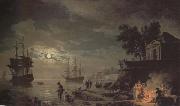 |
Claude-joseph Vernet
|
|
French Painter, 1714-1789
Vernet probably received his first lessons in painting from his father, Antoine, who then encouraged him to move to the studio of Philippe Sauvan (1697-1792), the leading master in Avignon. Sauvan supplied altarpieces to local churches and decorative works and mythologies for grand houses in the area. After this apprenticeship Vernet worked in Aix-en-Provence with the decorative painter Jacques Viali ( fl 1681- 1745), who also painted landscapes and marine pictures. In 1731 Vernet independently produced a suite of decorative overdoors for the h?tel of the Marquise de Simiane at Aix-en-Provence; at least two of these survive (in situ) and are Vernet's earliest datable landscapes. These are early indications of his favoured type of subject, and Vernet would have studied works attributed to such 17th-century masters as Claude Lorrain, Gaspard Dughet and Salvator Rosa in private collections at Aix and Avignon. Three years later Joseph de Seytres, Marquis de Caumont, who had previously recommended Vernet to the Marquise de Simiane, offered to sponsor a trip to Italy. |
|
|
|
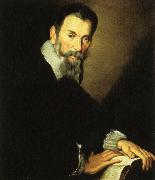 |
claudio monteverdi
|
|
Period: Baroque (1600-1749)
Country: Italy
Born: May 15, 1567 in Cremona, Italy
Died: November 29, 1643 in Venice, Italy
Genres: Ballet, Choral Music, Miscellaneous Music, Opera, Vocal Music
|
|
|
|
 |
CLERCK, Hendrik de
|
|
Flemish Baroque Era Painter, ca.1570-1630
Flemish painter and draughtsman. In 1587 he was working in Rome with the Brussels painter Frans van de Kasteele. That he subsequently lived in Brussels is confirmed by documentary evidence and by his status as court painter to the governors of the southern Netherlands. Stylistically, de Clerck's work (both paintings and drawings) is close to that of the Antwerp late Mannerist Marten de Vos, traditionally thought to have been his teacher, but it is possible that he was apprenticed to Joos van Winghe in Italy. He was later a member of the Brussels painters' guild, where from 1601 to 1611 Jan van Overstraeten was registered as his pupil. It was in 1594 that de Clerck was appointed court painter in Brussels, first to Archduke Ernest. In 1596, after the Archduke's death, his brother Emperor Rudolf II arranged for de Clerck to stay on as court painter in the service of the new Archdukes, Albert and Isabella. In 1609 de Clerck and Wenceslas Cobergher were commissioned to decorate the ceiling of the oratorium in the archducal palace in Brussels |
|
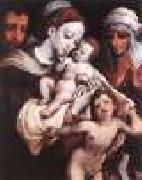 |
CLEVE, Cornelis van
|
|
Flemish painter, Antwerp school (b. 1520, Antwerpen, d.
after 1570, Antwerpen). |
|
|
|
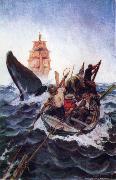 |
Clifford Warren Ashley
|
|
Author, Sailor, and Artist
American
1881-1947
was an American author, sailor, and artist. He is perhaps most famous for The Ashley Book of Knots, an encyclopedic reference manual with directions for and illustrations of thousands of knots. He invented the Ashley's stopper knot. Ashley also wrote The Yankee Whaler, a study of sperm whale hunters in New England in the late 18th century and early 19th century. He was born in New Bedford, |
|
|
|
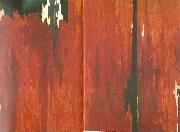 |
clyfford still
|
|
Clyfford Still (November 30, 1904 - June 23, 1980) was an American painter, and one of the leading figures of Abstract Expressionism.
Clyfford Still was a leader in the first generation of Abstract Expressionists who developed a new, powerful approach to painting in the years immediately following World War II. Still's contemporaries included Philip Guston, Franz Kline, Willem de Kooning, Robert Motherwell, Barnett Newman, Jackson Pollock, and Mark Rothko. Though the styles and approaches of these artists varied considerably, Abstract Expressionism is marked by abstract forms, expressive brushwork, and monumental scale, all of which were used to convey universal themes about creation, life, struggle, and death (the human condition), themes that took on a considerable relevance during and after World War II. Described by many as the most anti-traditional of the Abstract Expressionists, Still is credited with laying the groundwork for the movement. Still's shift from representational painting to abstraction occurred between 1938 and 1942, earlier than his colleagues, who continued to paint in figurative-surrealist styles well into the 1940s.
Still was born in 1904 in Grandin, North Dakota and spent his childhood in Spokane, Washington and Bow Island in southern Alberta, Canada. Although Abstract Expressionism is identified as a New York movement, Still's formative works were created during various teaching posts on the West Coast, first in Washington State at Washington State University (1935-41). His work of this period is marked by an expressive figurative style used in depictions of the people, buildings, tools and machinery characteristic of farm life. By the late 1930s, he began to simplify his forms as he moved from representational painting toward abstraction. In 1941 Still relocated to the San Francisco Bay area where, following work in various war industries, he became a highly influential professor at the California School of Fine Arts and what is now known as the San Francisco Art Institute. He taught there from 1946-1950 (with a break in the summer of 1948 when he returned to New York). It was during this time when Still broke through to his mature style. Still also taught at Virginia Commonwealth University from 1943-45. |
|
|
|
 |
CODAZZI, Viviano
|
|
Italian Baroque Era Painter, 1604-1670
Italian painter. He arrived in Naples about 1634, having almost certainly trained in Rome. He was a specialist in the realistic architectural VEDUTA, and his interest in this theme may have been stimulated in Rome by the quadratura frescoes of Agostino Tassi and by the urban views of Claude Lorrain and Herman van Swanevelt. |
|
 |
CODDE, Pieter
|
|
Dutch Baroque Era Painter, 1599-1678
Dutch painter and poet. Frans Hals was once thought to have been his teacher, but there is no evidence for this. It is possible that Codde studied with a portrait painter, perhaps Barent van Someren (1572/3-1632) or Cornelis van der Voort (1576-1624), since most of his earliest works, from the period 1623-7, seem to be portraits. His earliest known dated work is the Portrait of a Young Man (1626; Oxford, Ashmolean), which precedes by a year his earliest dated genre piece, the Dancing Lesson (1627; Paris, Louvre). He was particularly productive in the 1620s and 1630s, painting mainly interior genre scenes. After the mid-1640s only portraits and a few history paintings, such as the Adoration of the Shepherds |
|
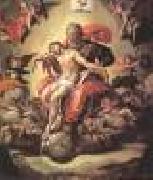 |
COECKE VAN AELST, Pieter
|
|
Flemish Northern Renaissance Painter, ca.1502-1550
South Netherlandish painter, architect, and linguist. After extensive travels he settled in Antwerp, where he published (1539) a Flemish translation of Vitru-vius's De Architectura and (1539?C53) Serlio's multi-volume treatise into Flemish, French, and High German.
|
|
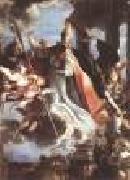 |
COELLO, Claudio
|
|
Spanish Baroque Era Painter, 1642-1693
Spanish painter and draughtsman. Together with the court painters Francisco Rizi, Juan Carre?o de Miranda and Francisco de Herrera, he was one of the foremost exponents of a style of Spanish painting that developed between c. 1660 and 1700 and was characterized by theatrical compositions and rich colours. The sources of this late Baroque style, which was distinct from that of the previous generation of Spanish Baroque artists, most of whom painted sober, realistic depictions of religious and secular life, lie in the influence exerted by Venetian Renaissance painting and by Italian and Flemish art of the period, |
|
|
|
|
|
|
|
 |
Colin Campbell Cooper
|
|
1856-1937
Colin
Campbell Cooper Galleries
Cooper was born in Philadelphia, Pennsylvania to Dr. Colin Campbell Cooper and Emily William Cooper. He studied art at the Pennsylvania Academy of the Fine Arts under Thomas Eakins, and at Acad??mie Julian in Paris.
Back in Philadelphia, he taught watercolor classes at the Drexel Institute of Art, Science and Industry (now Drexel University). In 1897 he married renowned artist Emma Lampert, and the next year they moved to New York City, where he began work on his famous skyscraper paintings.
He travelled extensively, sketching and painting scenes of Europe, Asia, and the United States in watercolors and oils. He and his wife were on the RMS Carpathia and assisted in the rescue of the survivors of the Titanic. Several of his paintings document the rescue.
In 1912, Cooper was elected to a prestigious membership in the National Academy of Design.
Cooper exhibited in San Francisco's Panama-Pacific Exposition of 1915, winning the Gold Medal for oil and the Silver Medal for watercolor. He also participated in the Panama-California Exposition in San Diego.
In 1920 his wife Emma died. He moved to Santa Barbara, California in 1921 and became dean of the School of Painting at the Santa Barbara Community School of Arts. He married his second wife, Marie Frehsee, in 1927.
Cooper died in Santa Barbara in 1937. |
|
 |
COLLANTES, Francisco
|
|
Spanish Baroque Era Painter, 1599-1656
Spanish painter. He was probably a pupil of Vicente Carducho, but there is nothing to support this idea. His evident familiarity with contemporary Italian art indicates that he visited Rome and Naples, and this might explain the absence of documentation on him in Spain. Collantes enjoyed considerable prestige, and his paintings were acquired in 1634 for the decoration of the Buen Retiro Palace in Madrid; some of them may have been specially painted for this setting. His name appears frequently in the inventories of collectors in Madrid throughout the 17th century. It is impossible to date Collantes's undated paintings with any accuracy. However, his work shows two very clear and different lines of development. His canvases of large, intensely naturalistic figures, with tenebrist lighting effects , are close in style to those of Jusepe Ribera. In them the intense, energetic figures are sometimes set against landscape backgrounds, for example in St Humphrey (1645-50; Madrid, Prado) and St John the Baptist , but, still following Ribera, the naturalistic elements are emphasized. He also specialized in landscapes and in biblical or mythological subjects, compositions with minute figures set against wide landscapes or architecture with strong light effects. These are the works for which he is best known and which are the most important, since he was one of the few landscape painters in Spain in the 17th century. |
|
|
|
 |
Colman Samuel
|
|
American Hudson River School Painter , 1832-1920
was an American painter, interior designer, and writer, probably best remembered for his paintings of the Hudson River. Born in Portland, Maine, Colman moved to New York City with his family as a child. His father opened a bookstore, attracting a literate clientele that may have influenced Colman's artistic development. He is believed to have studied briefly under the Hudson River school painter Asher Durand, and he exhibited his first work at the National Academy of Design in 1850. By 1854 he had opened his own New York City studio. The following year he was elected an associate member of the National Academy, with full membership bestowed in 1862. His landscape paintings in the 1850s and 1860s were influenced by the Hudson River school, an example being Meadows and Wildflowers at Conway (1856) now in the collection of the Frances Lehman Loeb Art Center at Vassar College. He was also able to paint in a romantic style, which had become more fashionable after the Civil War. One of his best-known works, and one of the iconic images of Hudson River School art, is his Storm King on the Hudson (1866), now in the collection of the Smithsonian American Art Museum in Washington, DC. Colman was an inveterate traveler, and many of his works depict scenes from foreign cities and ports. He made his first trip abroad to France and Spain in 1860-1861, and returned for a more extensive four-year European tour in the early 1870s in which he spent much time in Mediterranean locales. |
|
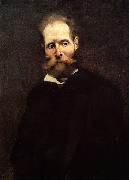 |
Columbano Bordalo Pinheiro
|
|
(Lisbon, 21 November 1857 - Lisbon, 6 November 1929), who is usually referred to as Columbano, was a Portuguese Realist painter. Usually considered the greatest Portuguese painter of the 19th century, he has been compared to the likes of Wilhelm Leibl and Thomas Eakins.
Columbano was the son of a mediocre romantic painter, Manuel Maria Bordalo Pinheiro, and the younger brother of the great caricaturist, Rafael Bordalo Pinheiro. He became the leading painter of his generation and the master of realism in Portuguese painting, specializing in portraiture. He was disciple of his father, of the painter Miguel Ângelo Lupi and the sculptor Simões de Almeida. After attempting twice for a bursar to study abroad finally in 1881 the countess of Edla, second wife of D.Fernando would finance his study in France. There he studied the work of French naturalist, realist and impressionist painters, like Courbet, Manet and Degas without losing his distinctive style which is often gloomy and intimist. He joined the "Grupo do Leão" (The Lion's Group), a usual meeting of artists, writers and intellectuals in a Lisbon downtown restaurant called "Leão de Ouro" (The Golden Lion) in order to discuss aesthetic issues and proclaim Naturalism against the academic art of the time. The group also included Rafael Bordalo Pinheiro, Antenio da Silva Porto, Marques de Oliveira and Jose Malhoa. He painted portraits of some of the greatest names of Portuguese society and culture of his time like Jose Maria de Eça de Queiroz, Teefilo Braga, Raul Brandão and had great psychological accuracy in defining the personality of those depicted. His most famous portrait was that of the poet Antero de Quental in 1889. In this haunting work Columbano seems to have anticipated Antero's suicide.
Columbano was a well known Republican, so it wasn't surprising that after the Republic proclamation, in 1910, he was invited to design the flag of the new regime and was nominated director of the National Museum of Contemporary Art, currently the Chiado Museum, in Lisbon, of which he was in charge from 1914 to 1927. The best collection of his paintings is in the Chiado Museum, in Lisbon. He's also represented in some of the finest Portuguese museums, like the National Museum Soares dos Reis, in Porto.
|
|
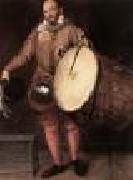 |
CONGNET, Gillis
|
|
Flemish painter (b. ca. 1538, Antwerpen, d. 1599, Hamburg)
Flemish painter. The son of a goldsmith of the same name, he trained as a painter with Lambert Wenselyns ( fl 1553) and possibly also with Antoon van Palermo (1503 or 1513-c. 1589), an Antwerp art dealer in whose house he lived (van Mander). In 1561 he became a free master in the Antwerp Guild of St Luke. Shortly afterwards he travelled to Italy, going first to Naples and Sicily and then to Terni, where he made frescoes with a painter named Stello. In 1568 he was registered as a member of the Accademia in Florence. He must have returned to Antwerp in 1570, for between that year and 1585 his name appears in the register of the city's Guild of St Luke, of which he became Dean in 1585. A year later, on the arrival of Alessandro Farnese, |
|
 |
CONINXLOO, Gillis van
|
|
Flemish Northern Renaissance Painter, 1544-1607
Flemish landscape painter. His Judgment of Midas (Dresden), Latona (Hermitage, St. Petersburg), and above all the Landscape with Figures (Liechtenstein Gall., Vienna) are fine examples of his art. Coninxloo's paintings, characterized by fantasy, warm tones, and refined realism, |
|
|
|
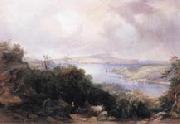 |
Conrad Martens
|
|
England/Australia Painter , 1801-1878
Australian painter, lithographer and librarian of English birth. Son of a London merchant, he studied c. 1816 under Copley Fielding. His training was as a watercolourist and his most important works are watercolours, although he also produced paintings in oils. His early work displays the taste then current for the Picturesque. Francis Danby, David Cox and Turner were artists he admired. Martens left for India in 1832 or 1833 but at Montevideo joined Charles Darwin's expedition, replacing Augustus Earle as topographical draughtsman aboard the Beagle. The work strengthened his observation of detail and skill as a draughtsman. He left the expedition in October 1834 and, travelling via Tahiti and New Zealand, arrived in Sydney in April 1835. There he worked as a professional artist, in the 1840s and 1850s producing lithographic views of the Sydney area to augment his income. In 1863 he was appointed Parliamentary Librarian, which secured his finances. The skills he had acquired aboard the Beagle helped to gain him commissions to depict the estates around Sydney. However, his admiration for Turner, and with this the desire to elevate landscape as a subject, prompted him to subordinate line to mood in a Romantic treatment of the landscape. His thoughts were clearly stated in a lecture on landscape painting given in 1856 at the Australian Library, Sydney (see Smith, 1975). |
|
|
|
|
|
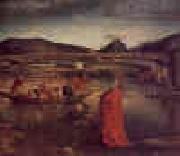 |
Conrad Witz
|
|
1400-1446 German
(Resident in Switzerland)
Conrad Witz Gallery
-6). German painter. One of the great innovators in northern European painting, he turned away from the lyricism of the preceding generation of German painters. His sturdy, monumental figures give a strong impression of their physical presence, gestures are dignified and the colours strong and simple. Even scenes with several figures are strangely undramatic and static. The surface appearance of materials, especially metals and stone, is intensely observed and recorded with an almost naive precision. Powerful cast shadows help to define the spatial relationships between objects. His fresh approach to the natural world reflects that of the Netherlandish painters: the Master of Fl?malle and the van Eycks. He need not, however, have trained in the Netherlands or in Burgundy as knowledge of their style could have been gained in Basle. He remained, however, untouched by the anecdotal quality present in their art, while Witz pure tempera technique differs emphatically from the refined use of oil glazes that endows Netherlandish pictures with their jewel-like brilliance. |
|
 |
Constance Marie Charpentier
|
|
(born 1767 Paris, France - August 3, 1849 France) was a French painter. She specialized in sentimental genre scenes and portraits, mainly children and women. She was also known as Constance Marie Bondelu.
She studied under Jacques-Louis David and Francois Gerard. In 1788 she received a 'Prix d'Encouragement.' From 1795 to 1819 she exhibited at the Salon where she received a gold medal. |
|
 |
Constance Mayer
|
|
Marie-Françoise-Constance Mayer-Lamartiniere
French Neoclassical Painter, 1775-1821 |
|
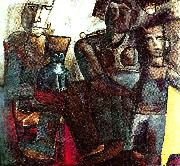 |
constant permeke
|
|
Constant Permeke (Dutch pronunciation: July 31, 1886 ?C January 4, 1952) was a Belgian painter and sculptor who is considered the leading figure of Flemish expressionism.
Permeke was born in Antwerp but when he was six years old the family moved to Ostend, where his father became curator of the Municipal Museum of Arts. Permeke went to school in Bruges from 1903 until 1906, when he was drafted into the Belgian army. He served in a university company with whom he settled in Sint-Martens-Latem. After his military service ended in March 1908, Permeke returned to Ostend where he roomed together with another artist, Gustave De Smet but in 1909 he returned to Latem where he lived as a recluse. His work of this period is characterized by his heavy brush. In 1912 Permeke married Maria Delaere and the newlyweds settled in Ostend. His work from this period gains its expressive force through muted tonality and brutal forms.
When World War I started, Permeke was mobilized and during the defense of Antwerp he was wounded in action near the town of Duffel. His wounds forced him to be evacuated to the United Kingdom where he was in hospital at South Hillwood. After his release from hospital he was reunited with his family in Folkestone, where his son John was born. In 1916 he moved to Chardstock in Devonshire and started painting again, mostly colorful English landscapes. After the end of the war, the Permeke family returned to Ostend in 1919. In contrast to the happy time in Devonshire, the harsh reality of the worker's life turns Permeke's work back to a gloomier mood as he mainly paints the harsh fisherman's life.
In 1921 Permeke was able to exhibit his work in Antwerp and in Paris. Between 1922 and 1924, Permeke regularly went to Astene, in order to cooperate with Frits Van den Berghe. In 1926 Permeke went to Vevey in Switzerland where he mainly painted mountain scenes. In 1929 he moved to Jabbeke. During this period he changed his subject: instead of the fisherman and the sea he now focused on the farmer and his land. During this period, Permeke was enormously productive with works like "Gouden Oogst" (1935), "De Grote Marine" (1935), "Moederschap" (1936), "Het Afscheid" (1948), "Dagelijks Brood" (1950). Starting in 1937 Permeke tried his hand at sculpting as well. As a sculptor, Permeke tried to isolate the human figure in monumental efforts. "De Zaaier" (1939), "Niobe" (1946) and "De Drie Gratiën" (1949) are good examples of this period.
During World War II, Permeke was forbidden to paint by the German occupiers as his art was seen by them as Entartete Kunst. Privately, things were even worse as his son Paul was arrested and sent to Germany as a forced labourer. After the war, Permeke was appointed director of the National higher Institute and of the Royal Academy in Antwerp but after only one year he offered his resignation. In 1947-1948, Permeke had a big retrospective exhibition in Paris but his happiness at the return of his son was soon shattered when in 1948 his wife died. Emotionally scarred and ailing, Permeke had to be nursed by his daughter.
|
|
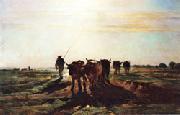 |
constant troyon
|
|
French Barbizon School Painter, 1810-1865 Troyon's students included Evariste-Vital Luminais. French painter. He was brought up among the Sevres ceramics workers and received his first lessons in drawing and painting from Denis-Desire Riocreux (1791-1872), a porcelain painter who was one of the founders of the Musee National de Ceramique. Troyon began his career as a painter at the Sevres factory while also studying landscape painting in his spare time. |
|
|
|
|
|
 |
Constantin Daniel Stahi
|
|
(November 14, 1844 - June 18, 1920) was a Romanian painter and gravure artist.
In 1862 he entered the National School of Fine Arts from Iaşi where he was taught by Gheorghe Panaiteanu Bardasare and Gheorghe Şiller. He continued his artistic education in Munich where, for seven years, he studied painting, metal gravure and xylography.
He painted still life paintings representing small objects that were surrounding him, such as old books, newspapers, religious items, chairs, shoes, plates and especially fruits. Also, he painted many portraits of famous people of his time (for example Gheorghe Asachi, painted in 1881). Many others of his paintings take inspiration from the simple life in the countryside in idyllic compositions and by painting peasants having as models people living in Bavaria and Moldova regions.
Beside his artistic career, he was a professor and, later on, the headmaster of the National School of Fine Arts in Iaşi between 1892 and 1902, following Gheorghe Panaiteanu Bardasare.
He died in his house on Bărboi street in Iaşi on June 18, 1920 and was interred at Eternitatea Cemetery.
|
|
 |
Constantin Hansen
|
|
Danish
1804-1880
Constantin Hansen Galleries
Danish painter. In 1816 he entered the Kongelige Akademi for de Sk?nne Kunster, Copenhagen, intending to study architecture; however he later became attracted to painting and worked under C. W. Eckersberg from 1828 to 1833. Around the middle of the 1820s he started developing an individual style of portraiture, which had matured by 1830. He often used his sisters and friends as models; using simple costumes, poses and compositions, he managed to endow his pictures with the intimacy and warmth that mark the Danish Golden Age. The Artist's Sisters Signe and Henriette Reading a Book (1826; Copenhagen, Stat. Mus. Kst) is a fine example of his combination of natural observation with Neo-classical idealization. Under Eckersberg, who encouraged both, he strengthened his natural flair for painting serene architectural views of Copenhagen. |
|
|
|
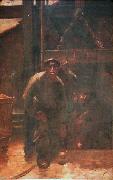 |
Constantin Meunier
|
|
(12 April 1831 - 4 April 1905), Belgian painter and sculptor, was born in Etterbeek, Brussels.
His first exhibit was a plaster sketch, "The Garland," shown at the Brussels Salon in 1851. Soon afterwards, on the advice of the painter Charles de Groux, he abandoned the chisel for the brush. His first important painting, "The Salle St Roch" (1857), was followed by a series of paintings including "A Trappist Funeral" (1860), "Trappists Ploughing" (1863), in collaboration with Alfred Verwee, "Divine Service at the Monastery of La Trappe" (1871) and episodes of the German Peasants' War (1878). About 1880 he was commissioned to illustrate those parts of Camille Lemonnier's description of Belgium in Le Tour du monde which referred to miners and factory-workers, and produced "In the Factory," "Smithery at Cockerill's," "Melting Steel at the Factory at Seraing" (1882), "Returning from the Pit," and "The Broken Crucible" (1884).
In 1882 he was employed by the government to copy Pedro de Campaña's "Descent from the Cross" at Seville, and in Spain he painted such characteristic pictures as "The Cafe Concert," "Procession on Good Friday," and "The Tobacco Factory at Seville" (Brussels Gallery). On his return to Belgium he was appointed professor at the Louvain Academy of Fine Arts.
In 1885 he returned to statuary and produced " The Puddler," "The Hammerer" (1886), "Firedamp" (1889, Brussels Gallery), "Ecce Homo" (1891), "The Old Mine-Horse" (1891), "The Mower" (1892), "The Glebe" (1892), the monument to Father Damien at Louvain (1893), "Puddler at the Furnace" (1893), the scheme of decoration for the Botanical Garden of Brussels in collaboration with the sculptor Charles van der Stappen (1893), "The Horse at the Pond," in the square in the north-east quarter of Brussels, and two unfinished works, the "Monument to Labour" and the Zola monument, in collaboration with the French sculptor Alexandre Charpentier.
The "Monument to Labour," which was acquired by the State for the Brussels Gallery, comprises four stone bas-reliefs, "Industry," "The Mine," "Harvest," and the "Harbour"; four bronze statues, "The Sower" "The Smith" "The Miner," and the "Ancestor"; and a bronze group, "Maternity".
Meunier died at Brussels on 4 April 1905. Constantin Meunier was a freemason, and a member of the lodge Les Amis Philanthropes of the Grand Orient of Belgium in Brussels. He was one of the cofounders of the Societe Libre des Beaux-Arts of Brussels.
In 1939, a museum dedicated to him was opened in the last house in which Meunier lived and worked, in Ixelles. Today about 150 of his works are displayed there.
|
|
|
|
 |
COORTE, Adriaen
|
|
Dutch Baroque Era Painter, ca.1660-1707
Dutch painter. He painted mainly small still-lifes, but contrary to the contemporary fashion for increasingly complicated representations of flowers and fruit, he preferred to paint single objects arranged as simply as possible. Coorte's subjects were generally fruit or vegetables, sometimes shells and, more rarely, flowers or vanitas arrangements. These are generally arranged on a stone plinth or slab, often with a crack or groove on the front edge. In the larger paintings the composition is sometimes enclosed in a niche |
|
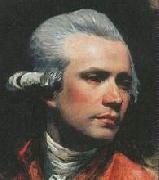 |
COPLEY, John Singleton
|
|
American Colonial Era Painter, 1738-1815
American portrait painter, b. Boston. Copley is considered the greatest of the American old masters. He studied with his stepfather, Peter Pelham, and undoubtedly frequented the studios of Smibert and Feke. At 20 he was already a successful portrait painter with a mature style remarkable for its brilliance, clarity, and forthright characterization. In 1766 his Boy with the Squirrel was exhibited in London and won the admiration of Benjamin West, who urged him to come to England. However, he remained in America for eight years longer and worked in New York City and Philadelphia as well as in Boston. In 1774 Copley visited Italy and then settled in London, where he spent the remainder of his life, enjoying many honors and the patronage of a distinguished clientele. In England his style gained in subtlety and polish but lost most of the vigor and individuality of his early work. He continued to paint portraits but enlarged his repertoire to include the enormous historical paintings that constituted the chief basis of his fame abroad. His large historical painting The Death of Lord Chatham (Tate Gall., London) gained him admittance to the Royal Academy. His rendering of a contemporary disaster, Brook Watson and the Shark (Mus. of Fine Arts, Boston), stands as a unique forerunner of romantic horror painting. Today Copley's reputation rests largely upon his early American portraits, which are treasured not only for their splendid pictorial qualities but also as the most powerful graphic record of their time and place. Portraits such as those of Nicholas Boylston and Mrs. Thomas Boylston (Harvard), Daniel Hubbard (Art Inst., Chicago), Governor Mifflin and Mrs. Mifflin (Historical Society of Pennsylvania, Philadelphia), and Paul Revere (Mus. of Fine Arts, Boston) are priceless documents in which the life of a whole society seems mirrored.
|
|
|
|
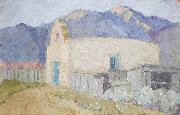 |
Cordelia Creigh Wilson
|
|
(28 November 1873, Georgetown, Colorado - 7 June 1953, Seattle, Washington) was a painter noted for her landscapes of New Mexico and the American Southwest.
Cordelia "Cordie" Creigh was born in Clear Creek County, Colorado. Her father died in her early childhood, and she was raised by her mother, Emma Creigh who shuttled the family between Winfield, Kansas and Colorado. She married Willard Wilkinson in Boulder, Colorado in 1897 and gave birth to her only child, Louise, in Hayden the next year, however, the couple divorced shortly after the turn of the century.
Cordelia then began to seriously develop her skills as an artist motivated by latest trends in American realism led by Robert Henri. Her academic training emphasized development of an alla prima technique and painting out of doors, which inspired her to produce bold impasto works quickly. She started making road trips to New Mexico and became friends with painters in the Taos Society of Artists and the Santa Fe art colony. Her numerous expressive oil sketches and en plein air canvases of adobe dwellings and rugged landscapes caught the attention of art dealers.
Before the end of the First World War, Cordelia married John H. Wilson and took his surname for her entire professional career. They settled on Tremont Street in Denver, just around the corner from the J. Gibson Smith Gallery which displayed and sold her works. Many of her paintings had frames she hand-carved in rustic Arts and Crafts style and gilded with sheets of gold leaf.
In 1917, Cordelia Wilson was honored by having two paintings selected for the inaugural exhibition of the new New Mexico Museum of Art in Santa Fe. The show featured easel works by George Bellows, Robert Henri, F. Martin Hennings, and Leon Kroll, who were working in the Southwest at that time, along with the "Taos Six" (Oscar Berninghaus, Ernest Blumenschein, Irving Couse, Herbert Dunton, Bert Geer Phillips, and Joseph Henry Sharp) and other members of the Taos Society. One of her paintings exhibited in the show, A Mexican Home, was reproduced in the January CFebruary 1918 issue of the journal Art and Archaeology (published by the Archaeological Institute of America) that featured a cover article about the museum's opening.
Among Cordelia Wilson's largest landscapes is a 50" x 70" canvas, created for World War I military training. It was exhibited at the School of American Research of Santa Fe in 1917 with other large-scale so-called "Range Finder" paintings by Blumenschein, Berninghaus, Phillips, Gustave Baumann, Walter Ufer, Leon Gaspard, and others. They had been commissioned by the U.S. Army based on a proposal by the Salmagundi Club of New York, whose members wanted to make a special contribution to America's war effort. When the show closed, the works on display were shipped to Camp Funston at Fort Riley, Kansas and Camp Cody at Deming, New Mexico. The paintings were used for indoor instruction in range finding, topographical quizzes, and map drawing at Army camps.
John Wilson, her husband, contracted tuberculosis in about 1921. The couple moved to the Seattle for his treatment at a sanitorium, where he passed away the following year. In 1923, Cordelia married for a third time to John N. Fahnestock, but this marriage ended in divorce in 1928. Cordelia continued to reside in Pacific Northwest producing still lifes, florals, and scenes of the Puget Sound region, although she periodically traveled, worked, and displayed her art in the Southwest. |
|
|
|
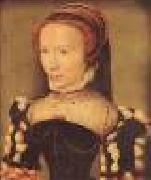 |
CORNEILLE DE LYON
|
|
Dutch-born French Northern Renaissance Painter, 1500-1575
Dutch painter, active in France. It is uncertain whether he was apprenticed in his native city of The Hague or in Antwerp, and nothing is known of him before 1533, when he was recorded in Lyon. It was possibly in the same year, while the French court was resident in Lyon, that Corneille was made painter to Queen Eleanor, the second wife of Francis I. In 1541 Corneille was painter to the Dauphin (later Henry II), and when the new king succeeded to the throne (1547) and made his state entry into Lyon in 1548, Corneille became Peintre du Roi. Corneille had obtained his naturalization papers in December 1547 and retained French nationality for the rest of his life. He married Marguerite Fradin, the daughter of a Lyon printer of some importance, and this allowed him to enter Lyon society. His studio was extremely prosperous until c. 1565, the year he is known to have visited Antwerp, but disappeared completely after his death despite the fact that he founded a dynasty of painters. His sons Corneille de La Haye II (b 1543) and Jacques de La Haye and his daughter Cl?mence de La Haye were all painters, and the family continued to be known for its artists until the 18th century. Corneille de Lyon was a Protestant, like all those in the circles in which he moved, and it may be that the decline of his fortunes in the 1560s |
|
|
|
|
|
|

